 Mevlana Mausoleum Mevlana Mausoleum
Mevlana was laid to rest beside his father in Konya in present day Turkey and over his remains a splendid shrine was erected. The 13th century Mevlana mausoleum with its mosque, dance hall, dervish living quarters, school and tombs of some leaders of the Mevlevi Order. �Find Konya�
 The mausoleum continues to draw pilgrims from all parts of the Muslim and non-Muslim world, mainly because, although Mevlana was a philosopher and mystic of Islam, he was not a Muslim of the orthodox type. While he was a devout Muslim, his doctrine advocates unlimited tolerance, positive reasoning, goodness, charity and awareness through love. To him and to his disciples all religions are more or less truth. Looking with the same eye on Muslim, Jew and Christian alike, his peaceful and tolerant teaching has appealed to men of all sects and creeds. The mausoleum continues to draw pilgrims from all parts of the Muslim and non-Muslim world, mainly because, although Mevlana was a philosopher and mystic of Islam, he was not a Muslim of the orthodox type. While he was a devout Muslim, his doctrine advocates unlimited tolerance, positive reasoning, goodness, charity and awareness through love. To him and to his disciples all religions are more or less truth. Looking with the same eye on Muslim, Jew and Christian alike, his peaceful and tolerant teaching has appealed to men of all sects and creeds.
 Mevlana Mausoleum was made a museum in 1927, four years after the establishment of the Turkish Republic. It is now one of the most visited museums in Turkey, attracting more than two million visitors a year. Mevlana Mausoleum was made a museum in 1927, four years after the establishment of the Turkish Republic. It is now one of the most visited museums in Turkey, attracting more than two million visitors a year.
For further information about Konya, the museum and for more images please visit these sites as well:
Turkish Ministry of Culture Konya Site
Turkish Ministry of Culture Mevlana Museum Site
Turkish Architecture in Anatolia |
|
* Alternative spellings: Mawlana, or Mowlana, and Jalal Al-Din, or Jalaluddin |
|
|
Sema: Human Being in the Universal Movement
Text by Dr. Celaleddin Celebi, illustrations by Ingrid Schaar �Dr. Celebi's other writings�
 Sema is part of the inspiration of Mevlana Celaleddin-i Rumi (1207- 1273) as well as of Turkish custom, history, beliefs and culture. Sema is part of the inspiration of Mevlana Celaleddin-i Rumi (1207- 1273) as well as of Turkish custom, history, beliefs and culture.
From a scientific viewpoint we witness that contemporary science definitely confirms that the fundamental condition of our existence is to revolve. There is no object, no being which does not revolve and the shared similarity among beings is the revolution of the electrons, protons and neutrons in the atoms, which constitute the structure of each of them. As a consequence of this similarity, everything revolves and man carries on his live, his very existence by means of the revolution in the atoms, structural stones of his body, by the revolution of his blood, by his coming from the earth and return to it, by his revolving with earth itself.
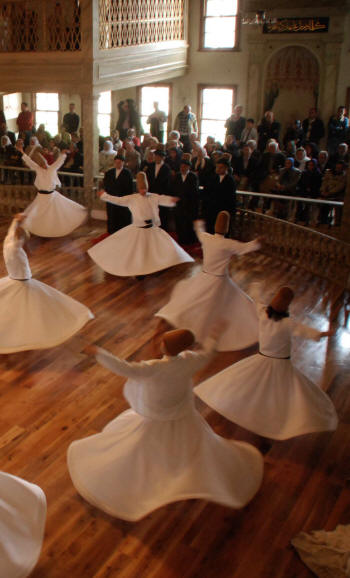 However, all of these are natural, unconscious revolutions. But man is the possessor of a mind and intelligence which distinguishes him from and makes him superior to other beings. Thus the "whirling dervish" or Semazen causes the mind to participate in the shared similarity and revolution of all other beings� Otherwise, the Sema ceremony represents a mystical journey of man's spiritual ascent through mind and love to "Perfect." Turning towards the truth, his growth through love, desert his ego, find the truth and arrive to the "Perfect," then he return from this spiritual journey as a man who reached maturity and a greater perfection, so as to love and to be of service to the whole of creation, to all creatures without discrimination of believes, races, classes and nations. However, all of these are natural, unconscious revolutions. But man is the possessor of a mind and intelligence which distinguishes him from and makes him superior to other beings. Thus the "whirling dervish" or Semazen causes the mind to participate in the shared similarity and revolution of all other beings� Otherwise, the Sema ceremony represents a mystical journey of man's spiritual ascent through mind and love to "Perfect." Turning towards the truth, his growth through love, desert his ego, find the truth and arrive to the "Perfect," then he return from this spiritual journey as a man who reached maturity and a greater perfection, so as to love and to be of service to the whole of creation, to all creatures without discrimination of believes, races, classes and nations.
|
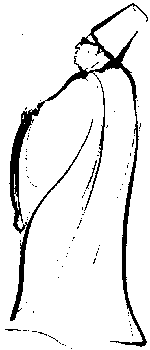 Sema consists of seven parts. Sema consists of seven parts.
The first part
The dervish with his headdress (his ego's tombstone), his white skirt (his ego's shroud) is by removing his black cloak spiritually born to the truth, he journeys and advances there. At the onset and each stop of the Sema, holding his arms crosswise he represent the number one, and testifies to God's unity. While whirling his arms are open, his right hand directed to the skies ready to receive God's beneficence, looking to his left hand turned toward the earth, he turn from right to left around the heart. This is his way of conveying God's spiritual gift to the people upon whom he looks with the eyes of God. Revolving around the heart, from right to left, he embraces all the mankind, all the creation with affection and love� It starts with an eulogy "Nat-I Serif" to the Prophet, who represents love, and all Prophets before him. To praise them is praising God, who created all of them.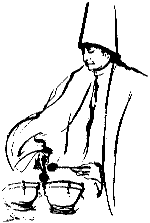
The second part is a drum voice,
symbolizing God order to the Creation: "Be."
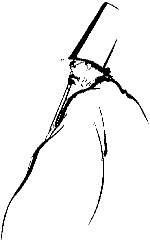 The third part is an instrumental improvisation "taksim" with a reed "ney." It represents the first breath which gives life to everything. The Divine Breath. The third part is an instrumental improvisation "taksim" with a reed "ney." It represents the first breath which gives life to everything. The Divine Breath.
The fourth part is the "dervishes" greetings to each other and their thrice repeated circular walk "Devr-i Veled," with the accompaniment of a music called "peshrev." It symbolize the salutation of soul to soul concealed by shapes and bodies.
The fifth part is the Sema (whirling). It consists of four salutes or "Selam"s. At the end of each as in the onset, the dervish testifies by his appearance to God's unity. |
- The first salute is man's birth to truth by feeling and mind. His complete conception of the existence of God as Creator and his state of creature.
- The second salute expresses the rapture of man witnessing the splendor of creation, in front of God's greatness and omnipotence.
- The third salute is the transformation of rapture into love and thereby the sacrifice of mind to love. It is a complete submission, it is annihilation of self with in the loved one, it is unity. This state of ecstasy is the highest grade in Buddhism, defined as "Nirvana" and in Islam "Fenafillah." However, the highest rank in Islam is the rank of the Prophet, he is called God's servant first and his messenger afterwards. The aim of Sema is not unbroken ecstasy and loss of conscious thought. At the termination of this salute, he approves again by his appearance, arms crosswise the Unity of God, consciously and feelingly.
- The forth salute Just as the Prophet ascends till the "Throne" and then returns to his task on earth, the whirling dervish reaching the state of "Fenafillah," return to his task in creation, to his state of subservience following the termination of his spiritual journey and his ascent. He is a servant of God, of his Books, of his Prophets and all his creation.
|
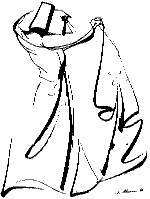
First Salute
|

Kiss of hand
Permission to whirl (dance) |
|
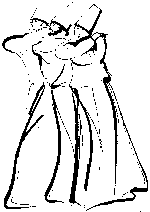
Second Salute
|
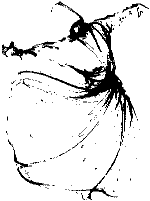
Third Salute - Whirling
|
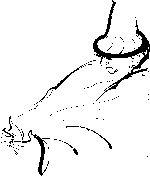
At the sixth part Sema ends with a reading of the Quran and specially of the verse from sura Bakara 2, verse 115, "Unto God belong the East and the West, and whither over ye turn, you are faced with Him. He is All-Embracing, All-Knowing."
The seventh part is a prayer for the repose of the souls of all Prophets and all believers.
|
 |
 |
|
* Alternative spellings: Mawlana, or Mowlana, and Jalal Al-Din, or Jalaluddin |
|





 Post Options
Post Options
 Thanks(0)
Thanks(0)
 Quote
Quote  Reply
Reply
 Posted: 15 April 2005 at 2:31pm
Posted: 15 April 2005 at 2:31pm


 Post Options
Post Options
 Thanks(0)
Thanks(0)
 Quote
Quote  Reply
Reply
 Posted: 15 April 2005 at 2:29pm
Posted: 15 April 2005 at 2:29pm

